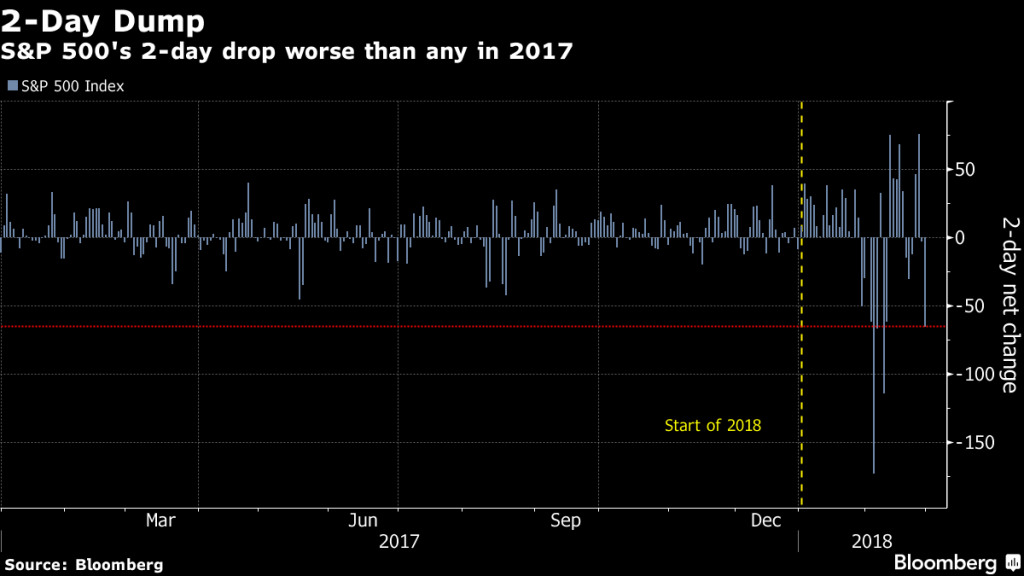Last Two Days Rough For Stocks. Still Not as Bad as February.
It’s testament to how rough stocks had it in February that the last two days, a stretch that would’ve qualified as the worst selloff in all of 2017, barely shows up in a monthly graph.
Not that it wasn’t painful. The S&P 500 Index slid 2.4 percent over Tuesday and Wednesday to cap the biggest monthly retreat since January 2016, as concerns about Federal Reserve policy brought out sellers and briefly pushed the Cboe Volatility Index back above 20. Breadth, a concern even as stocks rallied nine of 11 days starting Feb. 9, evaporated Wednesday, with only 15 percent of the S&P 500 managing gains.
Wednesday’s decline came as 10-year Treasury rates dropped for the fourth time in five days, ending the month roughly where they began.
“That the S&P is down this much even as yields are falling tells me that there is probably still a lot of fear about how sustainable the bounce is,” said Donald Selkin, New York-based chief market strategist at Newbridge Securities Corp. “Investors are pulling out of U.S. stocks at the end of the month as they are afraid that more losses will follow.”
At Wednesday’s close of 2,713.83, the S&P 500 slipped back below its 50-day moving average, the level it has crossed from above three times this month, after trading above the short-term support level since September.
Bulls continue to fret about deteriorating breadth. The S&P 500 Equal Weighted Index, in which Apple Inc. matters as much as relative pipsqueaks like Garmin Ltd. and Macy’s Inc., lost 4.4 percent this month on a total return basis, compared with a 3.7 percent decline in the S&P 500.
Another concern is that the market keeps attracting more interest when it’s falling than when it’s rising. Volume on all U.S. exchanges topped 8.1 billion shares on Wednesday, the most in 12 days, and has averaged 7.3 billion this week. In the previous four sessions it was 6.7 billion.
“There’s a lack of confidence in the fact that we’re through the entire correction,” said Ernie Cecilia, the chief investment officer at Bryn Mawr Trust Co. “You had retracement, but it’s been very narrow, and that suggests to us that there isn’t the breadth and confidence to say we’re out of the woods yet.”

